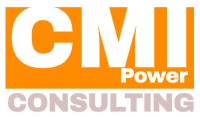INCREASING DISCIPLINE IN ADHERING TO RULES AND REGULATIONS WITHIN ORGANIZATION.
Layered Process Audit (LPA) implementation
Customer needs
Business +400 employees
The project was conducted within a manufacturing company with over 400 employees, that struggled with consistency in implementing its development strategy through improvement projects and adhering to company rules, exhibiting a lack of discipline. These shortcomings had an impact on quality and delivery costs, ultimately negatively affecting the company’s profit margins. Additionally, there were requirements from clients (e.g. General Motors (including Opel, Chevrolet, Cadillac, Saab, Isuzu, Lotus) and the PSA Group (Peugeot Société Anonyme, Citroën, Chrysler Europe) and the IATF16949 quality standard for implementing Layered Process Audits (LPA) methodology.
Implementation
Together with the client, the project objectives were to established an organization environmental and system to: (1) assess systematically the compliance with standardized processes; (2) identify opportunities for continuous improvement; and (3) provide learning opportunities within teams (coaching).
Layered process audit was successful implemented on different 4 levels, as follow:
Level 1 – Shift Supervisor’s Area of Responsibility: At this level, the focus is on the immediate responsibilities of the shift supervisor and their team. This includes ensuring that standard operating procedures are followed, safety protocols are adhered to, and production targets are met during their designated shift. Audits at this level help to assess the effectiveness of the shift supervisor’s leadership, the quality of work performed by the team, and the overall performance of the shift.
Level 2 – Production Area: This level encompasses the broader production area, beyond just one shift. It involves auditing various aspects of the production process, such as equipment maintenance, inventory management, quality control measures, and adherence to production schedules. Audits at this level help identify any systemic issues within the production area that may impact overall efficiency and quality.
Level 3 – Middle Management Responsibility for Multiple Production Areas: Middle management at this level oversees multiple production areas and is responsible for coordinating operations, implementing process improvements, and ensuring alignment with company objectives. Audits at this level focus on evaluating the effectiveness of middle management in driving productivity, managing resources efficiently, and fostering a culture of continuous improvement across different production areas.
Level 4 – Senior Management Responsibility for the Entire Production Factory: At the highest level, senior management holds overall responsibility for the entire production factory. This includes setting strategic direction, allocating resources, monitoring key performance indicators, and ensuring compliance with industry regulations and standards. Audits at this level assess the overall performance of the production facility, identify strategic opportunities for improvement, and provide insights to senior management for making informed decisions regarding the future direction of the organization.
By structuring audits across these four levels, our customer can comprehensively assess the performance of various levels of management and production processes, identify areas for improvement, and drive continuous enhancement of operational efficiency and product quality throughout the organization.
Outcomes
- Evaluate Operational Performance: audits enable direct assessment of shift leadership and the subordinate team’s performance. They help identify issues at the day-to-day operations level and implement corrective actions within the team.
- Monitor Production Process Efficiency: audits focus on evaluating production processes, identifying potential issues related to equipment maintenance, quality control, and inventory management. These audits are critical for maintaining efficient workflow and preventing production losses.
- Coordinate Improvements at Middle Management Level: audits assist in assessing middle management performance and identifying process improvement opportunities at a broader level. This level is crucial for coordinating improvement efforts and ensuring a consistent approach across the organization.
- Set Strategies at Senior Management Level: audits provide a comprehensive overview of the production factory’s performance and facilitate strategic decision-making at the senior leadership level. These audits are essential for identifying long-term trends, setting strategic priorities, and ensuring alignment with organizational long-term objectives.
